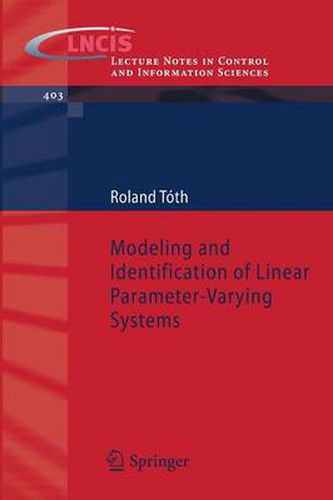Readings Newsletter
Become a Readings Member to make your shopping experience even easier.
Sign in or sign up for free!
You’re not far away from qualifying for FREE standard shipping within Australia
You’ve qualified for FREE standard shipping within Australia
The cart is loading…






This title is printed to order. This book may have been self-published. If so, we cannot guarantee the quality of the content. In the main most books will have gone through the editing process however some may not. We therefore suggest that you be aware of this before ordering this book. If in doubt check either the author or publisher’s details as we are unable to accept any returns unless they are faulty. Please contact us if you have any questions.
Through the past 20 years, the framework of Linear Parameter-Varying (LPV) systems has become a promising system theoretical approach to handle the control of mildly nonlinear and especially position dependent systems which are common in mechatronic applications and in the process industry. The birth of this system class was initiated by the need of engineers to achieve better performance for nonlinear and time-varying dynamics, c- mon in many industrial applications, than what the classical framework of Linear Time-Invariant (LTI) control can provide. However, it was also a p- mary goal to preserve simplicity and re-use the powerful LTI results by extending them to the LPV case. The progress continued according to this philosophy and LPV control has become a well established ?eld with many promising applications. Unfortunately, modeling of LPV systems, especially based on measured data (which is called system identi?cation) has seen a limited development sincethebirthoftheframework. Currentlythisbottleneck oftheLPVfra- work is halting the transfer of the LPV theory into industrial use. Without good models that ful?ll the expectations of the users and without the und- standing how these models correspond to the dynamics of the application, it is di?cult to design high performance LPV control solutions. This book aims to bridge the gap between modeling and control by investigating the fundamental questions of LPV modeling and identi?cation. It explores the missing details of the LPV system theory that have hindered the formu- tion of a well established identi?cation framework.
$9.00 standard shipping within Australia
FREE standard shipping within Australia for orders over $100.00
Express & International shipping calculated at checkout
This title is printed to order. This book may have been self-published. If so, we cannot guarantee the quality of the content. In the main most books will have gone through the editing process however some may not. We therefore suggest that you be aware of this before ordering this book. If in doubt check either the author or publisher’s details as we are unable to accept any returns unless they are faulty. Please contact us if you have any questions.
Through the past 20 years, the framework of Linear Parameter-Varying (LPV) systems has become a promising system theoretical approach to handle the control of mildly nonlinear and especially position dependent systems which are common in mechatronic applications and in the process industry. The birth of this system class was initiated by the need of engineers to achieve better performance for nonlinear and time-varying dynamics, c- mon in many industrial applications, than what the classical framework of Linear Time-Invariant (LTI) control can provide. However, it was also a p- mary goal to preserve simplicity and re-use the powerful LTI results by extending them to the LPV case. The progress continued according to this philosophy and LPV control has become a well established ?eld with many promising applications. Unfortunately, modeling of LPV systems, especially based on measured data (which is called system identi?cation) has seen a limited development sincethebirthoftheframework. Currentlythisbottleneck oftheLPVfra- work is halting the transfer of the LPV theory into industrial use. Without good models that ful?ll the expectations of the users and without the und- standing how these models correspond to the dynamics of the application, it is di?cult to design high performance LPV control solutions. This book aims to bridge the gap between modeling and control by investigating the fundamental questions of LPV modeling and identi?cation. It explores the missing details of the LPV system theory that have hindered the formu- tion of a well established identi?cation framework.